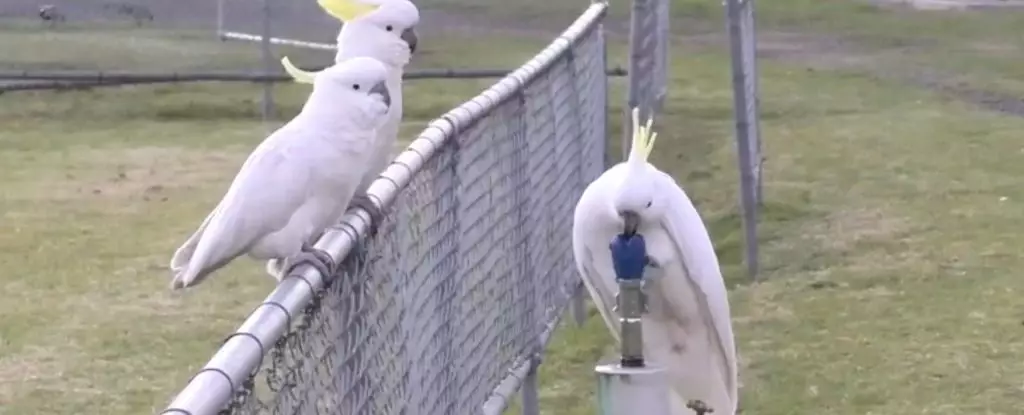In the heart of Western Sydney, a fascinating phenomenon has emerged that highlights the intelligence of sulfur-crested cockatoos (Cacatua galerita). Known for their striking appearance and raucous vocalizations, these birds have demonstrated an extraordinary aptitude for problem-solving, much to the delight of both researchers and local residents. Their latest accomplishment involves ingeniously mastering the use of park water fountains—an act that requires a series of intricate movements often overlooked by human observers.
This behavior isn’t entirely new for the species. Their history of adapting to human environments showcases a remarkable resilience and cunning that others in the animal kingdom may not possess. From demolishing trash can lids to now commandeering water sources, the cockatoos have proven themselves to be quick learners, able to navigate the complexities of urban life with remarkable finesse.
Behavioral Observations
Recent studies, led by biologist Barbara Klump from the Max Planck Institute for Animal Behavior, provide fascinating insights into these birds’ drinking habits. Over 44 days, researchers set up motion-triggered cameras to observe a particular fountain, recording a staggering 525 attempts by the cockatoos to access its water. What’s striking is the 41 percent success rate they achieved in manipulating the twist-handle fountain. Such statistics not only highlight their determination but also challenge preconceived notions about avian intelligence.
The timing of their visits to the fountain—early in the morning and during the evening—mirrors the behavior of thirsty schoolchildren waiting for their turn after gym class. This anthropomorphism of their behavior underscores the relational ties between certain human experiences and the natural world, reminding us that wisdom is not confined to our species alone.
Understanding Motivation
While researchers had initially speculated that the birds might flock to the fountains primarily on hot days, the findings revealed a more intricate motivation at play. The cockatoos utilized this water source regularly, hinting at underlying preferences or motivations that extend beyond mere hydration. The potential factors at play include the attractiveness of the water’s taste, the strategic advantages of using fountains situated in open spaces that offer protection from predators, or the well-documented concept of contrafreeloading, where animals choose challenging options over easier ones.
The social learning aspect is particularly riveting. The evidence suggests that this behavior is not only confined to isolated instances but has likely spread throughout the local population. This phenomenon fosters a culture of adaptation and skill-sharing among the birds, establishing a community bond that endures through generations.
A Lesson in Adaptability
As exciting as these findings are, they serve as a powerful reminder of the broader implications surrounding urban wildlife adaptability. The cockatoos have revealed an unexpected truth: the potential for interspecies adaptability resides within both animals and humans. The smarter we become about respecting and understanding the other creatures we share our environments with, the more we unlock a reciprocal relationship that stands to benefit both parties. The spectacle of these feathered innovators illustrates not just their cleverness but also challenges us to rethink our approach toward cohabitation with the natural world.


Leave a Reply